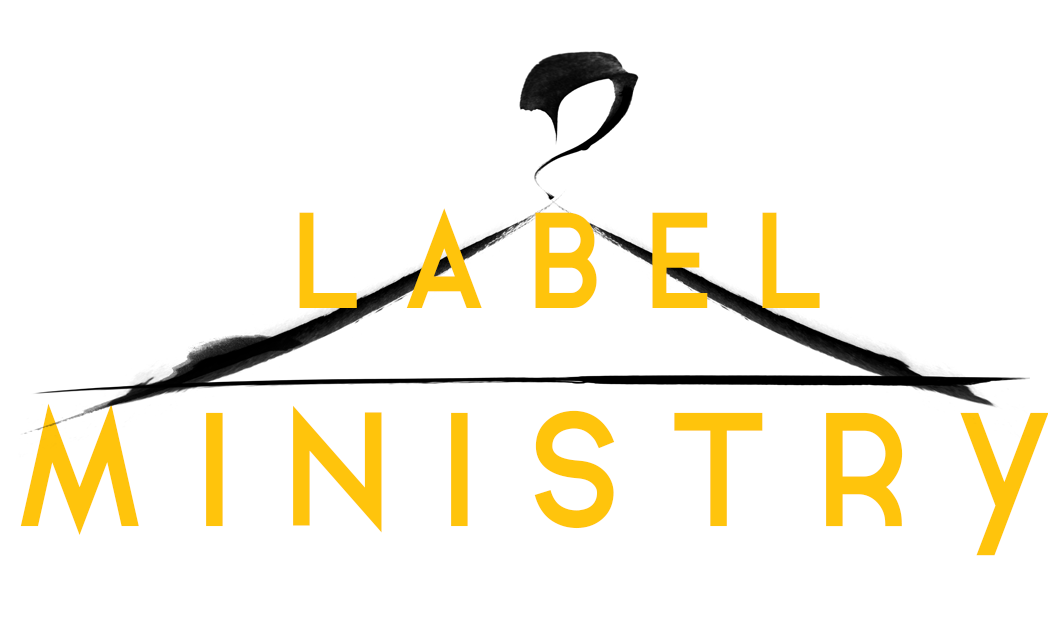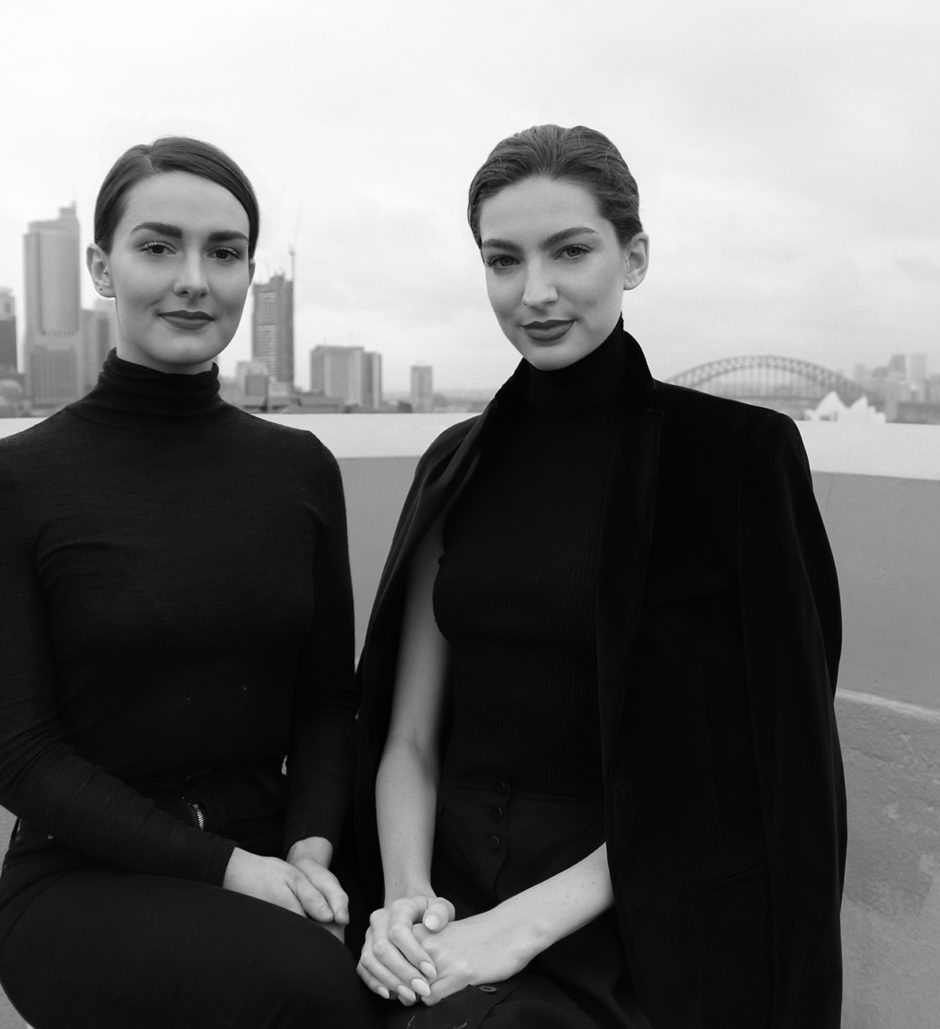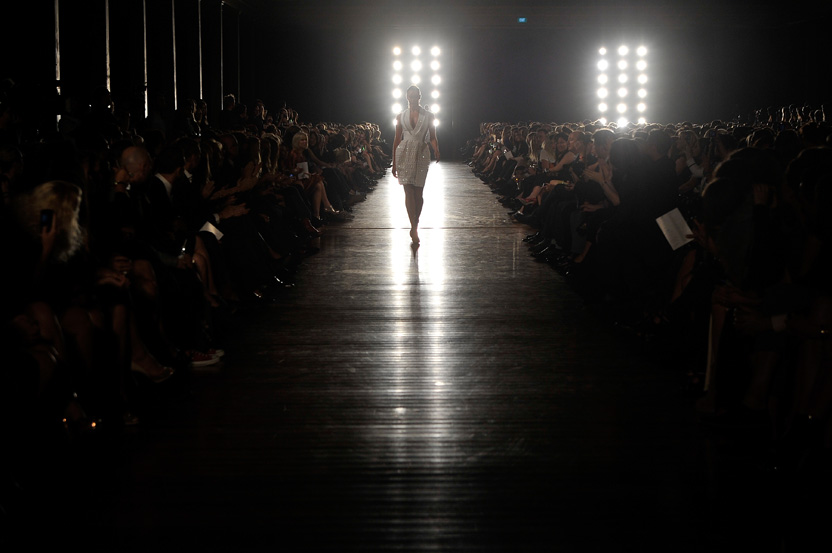A couple of years ago, I was sitting front row at the Fashion Design Studio‘s graduate runway as I do each and every year. It is my yearly gift to FDS that I write an article about the emerging designers who most stand out for me and to support the incredible contribution and long list of enormously successful designers which have called FDS their home. Continue Reading…
From the editor’s desk …
Almost overnight we have become used to consuming fashion with reckless, addicted abandon, buying more clothes than ever before, reversing centuries of fashion heritage, knowledge and understanding in the process.
Did you know in our contemporary fashion industry we create an estimate eighty billion new garments every year, of which approximately two million tonnes of apparel ends up in landfill every year?
Did you also know that it takes 11,000 – 20,000 litres of water to produce enough cotton to manufacture just one pair of jeans?
Have you heard of the book “To Die For” by Lucy Siegel? She describes fashion, as the queen of all the creative industries.
She speaks of an unwelcome revolution, where “almost overnight we have become used to consuming fashion with reckless, addicted abandon, buying more clothes than ever before, reversing centuries of fashion heritage, knowledge and understanding in the process”.
This girl makes almost too much sense, and her words are frightening in their truth.
Do you shop at Zara? H & M? Topshop? Do you ever wonder how your potential purchases affect the local designers in your own city?
As I walk through Sydney city, I often pop into Zara to check out the latest colours, designs and fashion on offer. Being a lover of pretty much any garment, my fashion senses are suitably nurtured by my visits to Zara as I love looking at the sea of creative flair which is refreshed on an almost fortnightly basis.
I often notice that many of the walk through customers are tempted to grab a great piece for a night out at a fairly low price. Any why wouldn’t they? Who wouldn’t want a nice fresh print, something new, at a very reasonable price which is great on the bank balance and which doesn’t put a dent in our conscience? The answer is clearly a lot of people.
Zara on any given day is buzzing, and I mean, buzzing, with wall to wall people who are obviously thinking the same way. But, thinking, might be the key here.
Zara is the Inditex fashion model which has enjoyed phenomenal success across the globe and appears to be growing at a great rate. At least in the fiscal way. But what about in a conscious, mindful, way. Should we not be embracing a greater level of awareness in this modern age around the creation, production and the ultimate offering of safe products. Fashion should not be exempt from these guidelines just because it is beautiful.
How much do we think about what we buy? Do we stop to consider where the garment was made and by whom? Do we consider the environmental impact those garments have had on our precious mother earth? Well the answer is some people do already and many more are starting to.
One such person who has become an expert on this topic is the author of “To Die For”, by Lucy Siegel, a British journalist focusing on the environmental, sustainability and ethics In her book she describes …
In her recent podcast The Wardrobe to Die For, she talks about how our over consumption of buying endless piles of clothing that we could not possible need, use, or enjoy is literally strangling our world, filling up our landfill sites and is one of our 21st century diseases. One that some of use are still not aware of.
In her book, To Die For, she writes, “this is not my ‘beautiful’ wardrobe. Every morning when I wake up I am directly confronted by my fashion history. Mistakes, corrections, good buys, bad buys, comfort buys, drunk buys: they refuse to go away. This is because my ‘primary’ wardrobe – as distinct from the other two wardrobes I’ve had to take over in the past ten years to accommodate the growing volume of my clothing collection – is opposite my bed, and the door, like a broken zipper, will no longer pull across to hide the tale of excess”.
In the words of Lucy Siegle.
I love fashion. But I want it to excite and inspire me, not to make me really, really angry.
The question is this. Should we develop a conscience around this type of shopping? I believe the answer is a very significant yes. When you ask? The time is right now. And if we have not fully understood before now how urgent this really is? Then we need to understand now.
Like never before.
Please don’t misunderstand me though as I am guilty of this type of purchase also. And Zara is not the only culprit. The Spanish company Inditex, is representative of the new model and has revolutionised the way we approach, and buy fashion. It has to stop. And soon. I have recently started to seriously consider the finer points of how “unthinking shopping” is affecting our local fashion industry, the state of our economy, the third world individual, and the environmental effect on mother earth. With the knowledge we currently have, we know that fashion production is the world’s second greatest pollutant. According to Lucy Siegel, it is estimated that eight hundred and forty million garments are produced every year by Zara alone and the owner, Amancio Ortega, is listed as the third richest man in the world.
Clearly the business model works but it might just be one of the key influencers which leads to the horrible demise of our human existence. Sadly, I can’t even be upbeat and tell you that we will all go out looking well dressed either …
Sadly in the world of fast fashion, we have developed what Lucy Siegel has termed, micro trends, where we see a lightning fast translation of fashion from the cat walks to sales floor to wardrobe.
We often hear the term sustainable fashion bandied around. Whilst we are all familiar with the term I feel it is really important to understand exactly what it means. The google definition goes like this.
-
Sustainable fashion, also called eco fashion, is a part of the growing design philosophy and trend of sustainability, the goal of which is to create a system which can be supported indefinitely in terms of environmentalism and social responsibility.
The reality in our everyday reality is that sadly, that not nearly enough designers are able to keep to the guidelines of sustainable production and practices even though they would like to simply because we do not support them enough financially for them to be able to make these kinds of important choices.
Recently, my most favourite designer of all time, at least in Australia, Kit Willow has launched her KitX label espousing the all important ideals of ethical production within the fashion industry. Naturally, it comes as no surprise to me that a woman with clearly so much phenomenal talent has taken up the role of the ultimate visionary for our local industry.
This excerpt of her recent interview with The Australian describes her long awaited re-entry into the Australian fashion scene and the launch of her newly created ethically sourced and manufactured line, along with her solid and affirmed relationship with David Jones.
The designer opened the show of 35 designers and labels, showcasing the debut collection for her KitX label. Just two years after being dumped from Willow, the label she founded, by its majority owners The Apparel Group, Podgornik has come back with an ethically and sustainably produced collection that has clearly struck a chord with the department store — and upstaged her former brand on the catwalk.
“(David Jones has) very much embraced my work from when I launched my first brand from its first collection, so it’s nice to get this wholehearted embrace for KitX and it’s wonderful to be able to open the show,” Podgornik told The Australian.
The collection goes into 16 stores across Australia, an impressive number for a contemporary label in its first season, which Podgornik puts down to her longstanding relationship with the retailer and its customers.
“I had a very strong connection with the customer so I think that’s probably front and foremost (in the decision) and why they’ve backed it like they have,’’ she said.
“The other thing in this collection is that quite a large part of it is organic jersey, which is really well price-pointed, which allows a broader customer base to buy into the brand.” Read the full article.
My question is this.
Can we afford not to educate ourselves about this important issue. I am not saying don’t ever buy high street labels, but I am saying, do it consciously.
Think about where the garments you purchase have been manufactured and produced and the effect that it’s production has had on that particular local community and the processes undertaken in its creation.
Has it helped them or has it kept them locked into a third world reality.
Please think about the ethical and moral investment in relation to the piece you buy. Do you intend to keep it, love it wear it, and cherish it? Will it be a long term marriage, or will you discard it after one wear and let it fill up the toxic piles of landfill that are already strangling our beautiful earth?
Lucy Siegel’s words, and even those of your grandchildren, might just be ringing in your ears if you don’t …
Until next time.
Jade xx



